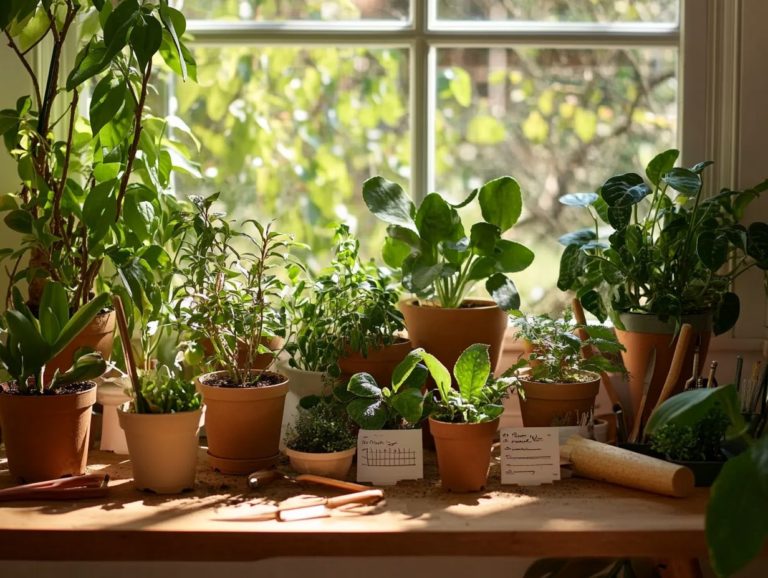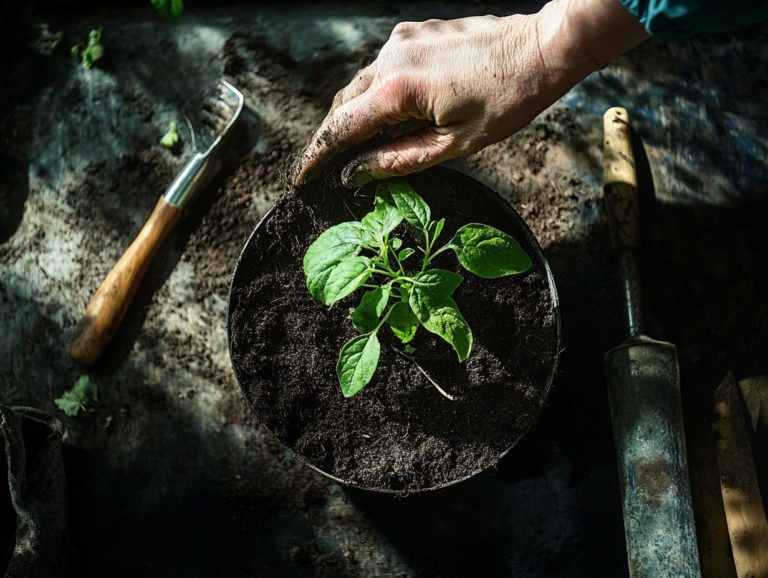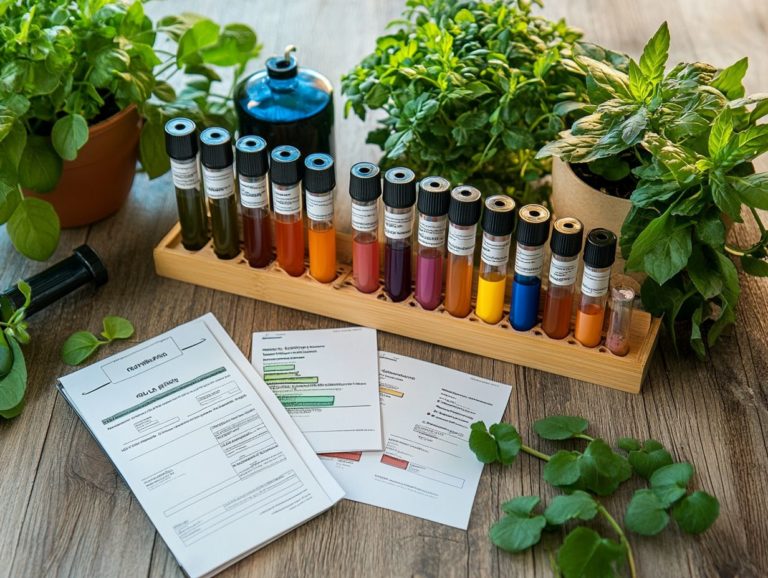Signs of Soil Bacteria Imbalance
Soil bacteria are essential for vibrant ecosystems and robust plant growth. An imbalance among these microscopic organisms can create problems that compromise soil health and crop yields.
This article explores soil bacteria imbalance. It guides you through identifying signs by observing visual indicators and plant symptoms.
You will learn about natural remedies and strategies to restore soil balance. Get ready to unlock the secrets of your soil to cultivate a flourishing garden!
Contents
Key Takeaways:
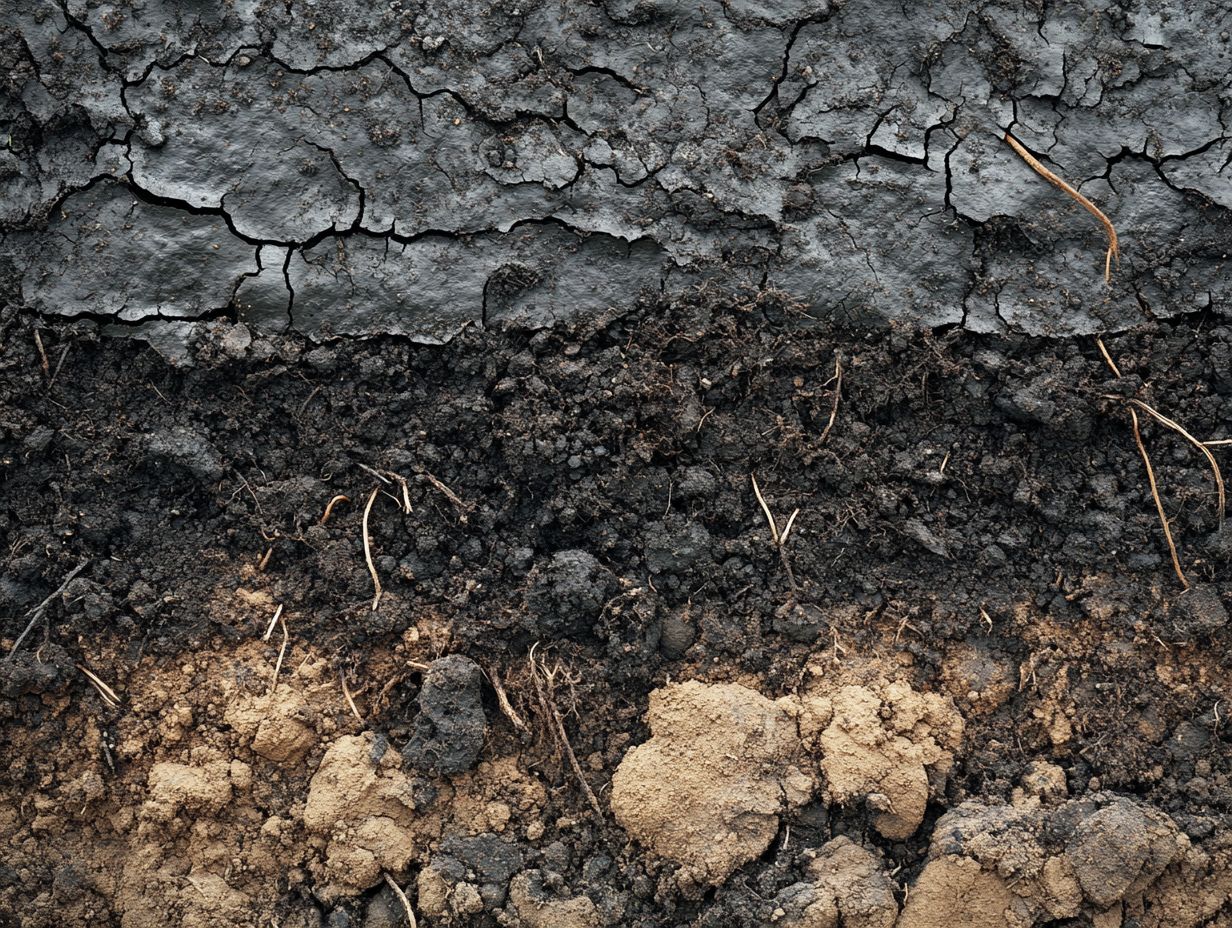
- You can easily spot signs of soil bacteria imbalance through visual indicators and plant health symptoms, such as stunted growth and discoloration.
- Environmental factors and human activities, such as overuse of chemicals, can disrupt the balance of soil bacteria.
- Restoring balance in soil bacteria can be achieved through natural remedies and techniques, as well as preventive measures to maintain a healthy and diverse bacterial community.
Understanding Soil Bacteria Imbalance
Soil bacteria imbalance occurs when the delicate composition of microorganisms in the soil ecosystem is disrupted. This balance is essential for maintaining the overall health of both the soil and the plants that rely on it.
Different things can cause this imbalance, resulting in a decline in beneficial microbes and a surge in harmful bacteria, ultimately compromising the soil’s fertility and ecological balance.
The cooperative partnership between soil organisms and plant roots helps plants absorb nutrients and resist diseases. Therefore, it’s crucial for you to understand the causes and consequences of soil bacteria imbalance to ensure the vitality of your gardening or agricultural endeavors.
What is Soil Bacteria Imbalance?
Soil bacteria imbalance occurs when the ratio of beneficial microorganisms to harmful bacteria shifts in an unfavorable direction, leading to a decline in soil health.
This shift can cause a reduction in essential bacteria, including nitrogen-fixers like Rhizobium and phosphorus-solubilizing organisms, both of which are vital for nutrient availability. Beneficial microbes play a crucial role in decomposing organic matter, improving soil structure, and promoting plant growth.
However, when pathogenic bacteria, such as certain species of Pseudomonas, begin to thrive, they can disrupt these important processes. This disruption not only diminishes soil fertility but also hampers plants’ ability to absorb nutrients efficiently.
As a result, you may face poor crop yields, increased vulnerability to diseases, and an overall decline in ecosystem health.
It becomes imperative for you, whether a farmer or a soil scientist, to monitor and manage soil bacterial communities with care.
Signs of Imbalance in Soil Bacteria
Recognizing the signs of imbalance in soil bacteria is essential for preserving the health of soil ecosystems. These indicators provide valuable insights into the underlying issues that may be impacting microbial diversity and functionality.
By paying attention to these signals, you can better understand and address the intricate relationships that sustain vibrant soil health.
Visual Indicators

You can spot visual signs of soil bacteria imbalance through changes in color, texture, or plant growth.
You might notice vibrant yellow patches appearing in your grass or observe stunted growth in your crops, often signaling underlying microbial disturbances. If the soil texture shifts to a compact, hard layer, it can hinder root development, leading to poor nutrient absorption.
A closer look may uncover varying degrees of soil moisture retention, which can adversely affect the beneficial microorganisms vital for plant health.
The presence of weeds or unusual pests may indicate an ecosystem struggling with imbalanced microbial populations, highlighting the intricate relationships between soil health and overall plant vitality.
Plant Health Symptoms
Symptoms of poor plant health often point to an imbalance in soil bacteria. These symptoms reveal themselves through stunted growth, yellowing leaves, or increased vulnerability to diseases.
When the microbial community in your soil is disrupted, essential nutrients like nitrogen, phosphorus, and potassium become less accessible to your plants. This exacerbates the issues described above.
Beneficial bacteria play a vital role in breaking down organic matter and enhancing soil structure. This improves water retention and aeration. Without these friendly microbes, root development can suffer significantly.
Pathogenic bacteria may seize the opportunity to invade, leading to root rot or wilt diseases. This worsens the detrimental impact on your plants overall vitality. To foster a balanced soil ecosystem, it s essential to adopt practices like crop rotation, cover cropping, and natural materials added to improve soil. This approach promotes healthy microbial activity, paving the way for robust plant health.
Possible Causes of Soil Bacteria Imbalance
The causes of soil bacteria imbalance can be complex. They arise from various environmental exposures and human activities that disrupt the natural ecosystem.
These disruptions impact soil health and productivity, demonstrating how interconnected our actions are with the environment.
Environmental Factors
Environmental factors like drought, flooding, and pollution can profoundly impact soil bacteria. These conditions create imbalances that jeopardize microbial diversity.
These climatic extremes disrupt the fragile balance within the soil ecosystem. This often leads to a decline in beneficial bacteria populations crucial for nutrient cycling and organic matter decomposition.
For example, when drought strikes, the soil can dry out too much, stifling the growth of microbial communities that flourish in moist environments. On the flip side, excessive flooding can create anaerobic conditions, giving harmful bacteria the upper hand and deteriorating overall soil health.
Pollution from agricultural runoff laden with chemicals and heavy metals introduces toxins that severely disrupt these vital microbial communities. This exacerbates the decline in soil biodiversity, ultimately resulting in poorer crop yields.
Human Activities
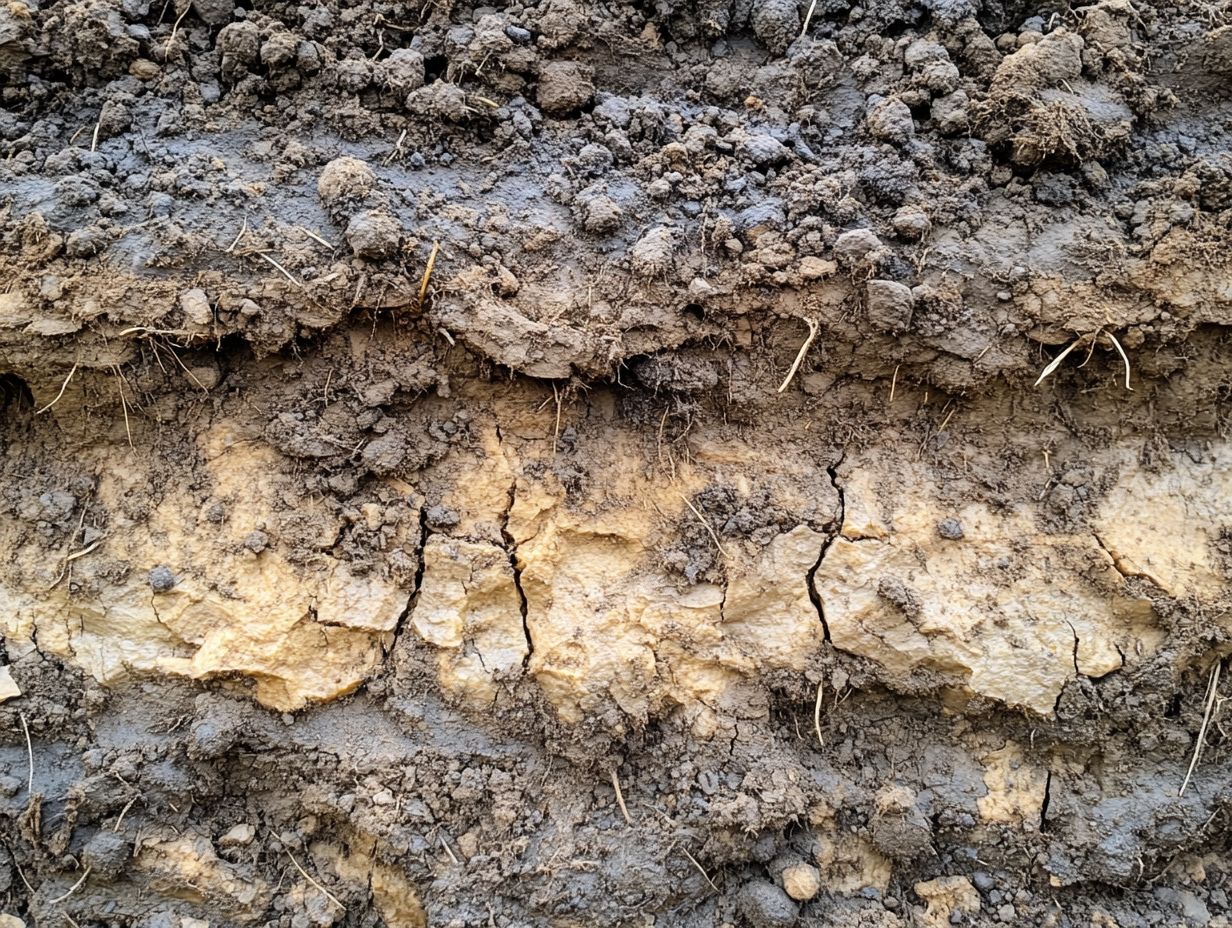
Human activities, such as industrial farming, land development, and the use of chemical fertilizers, disrupt the delicate balance of soil bacteria. This ultimately impacts soil quality in ways that may harm the ecosystem.
This disruption is particularly evident in intensive farming practices that often rely on monocultures. Such practices deplete specific nutrients and lead to a decline in biodiversity among soil microorganisms.
The frequent application of chemical fertilizers can cause nutrient runoff, altering the composition of microbial communities by favoring certain bacteria while diminishing the presence of others.
Land development, especially urbanization, tends to compact the soil, restrict water movement, and reduce available space for microbial habitats. Overgrazing is another concern; livestock trampling can disturb the soil and negatively impact microbial ecosystems.
Together, these activities compromise soil health, hindering its capacity to support plant life and perform essential ecological functions. We must understand these impacts to take action toward restoring and maintaining the vitality of our soils.
Easy Steps to Restore Your Soil s Balance!
Restoring balance in soil bacteria is crucial for enhancing soil health. You can achieve this through a blend of natural remedies and preventive measures designed to cultivate beneficial microbial communities.
Act now to restore balance in your soil!
Join the movement for healthier soil today!
Natural Remedies and Techniques
Natural remedies like compost, organic fertilizers, and cover cropping work wonders for balancing soil bacteria. These methods significantly enhance the overall health of your soil ecosystem.
These techniques also nourish beneficial bacteria and create a resilient environment that supports diverse plant life. By incorporating compost into your gardening routine, you provide a rich source of nutrients while creating a welcoming habitat for essential microorganisms.
Organic fertilizers, with their slow nutrient release, help reduce leaching risks and nurture a sustainable growing environment. Utilizing cover crops is another excellent strategy; they protect soil structure, prevent erosion, and importantly, boost the bacteria and other tiny organisms in the soil.
Together, these techniques create a harmonious synergy that optimizes soil health, ensuring robust growth and improved yields in your gardening and farming endeavors.
Preventive Measures
Implementing preventive measures such as crop rotation, reduced tillage, and regular soil testing is essential for maintaining a healthy balance of soil bacteria. These steps help prevent imbalances from developing.
Crop rotation encourages diverse plant growth, which significantly enhances microbial diversity a vital component of soil health. Planting different crops sequentially means each one contributes unique organic materials, fostering a varied bacterial population.
Reduced tillage practices minimize soil disruption, preserving habitats for beneficial microorganisms while improving soil structure and water retention. Regular soil testing provides invaluable insights into nutrient levels and pH, enabling you to make targeted amendments that support bacterial activity.
When you practice these methods together, you create a resilient agricultural system. This system promotes sustainable productivity while reducing reliance on chemical inputs.
Frequently Asked Questions
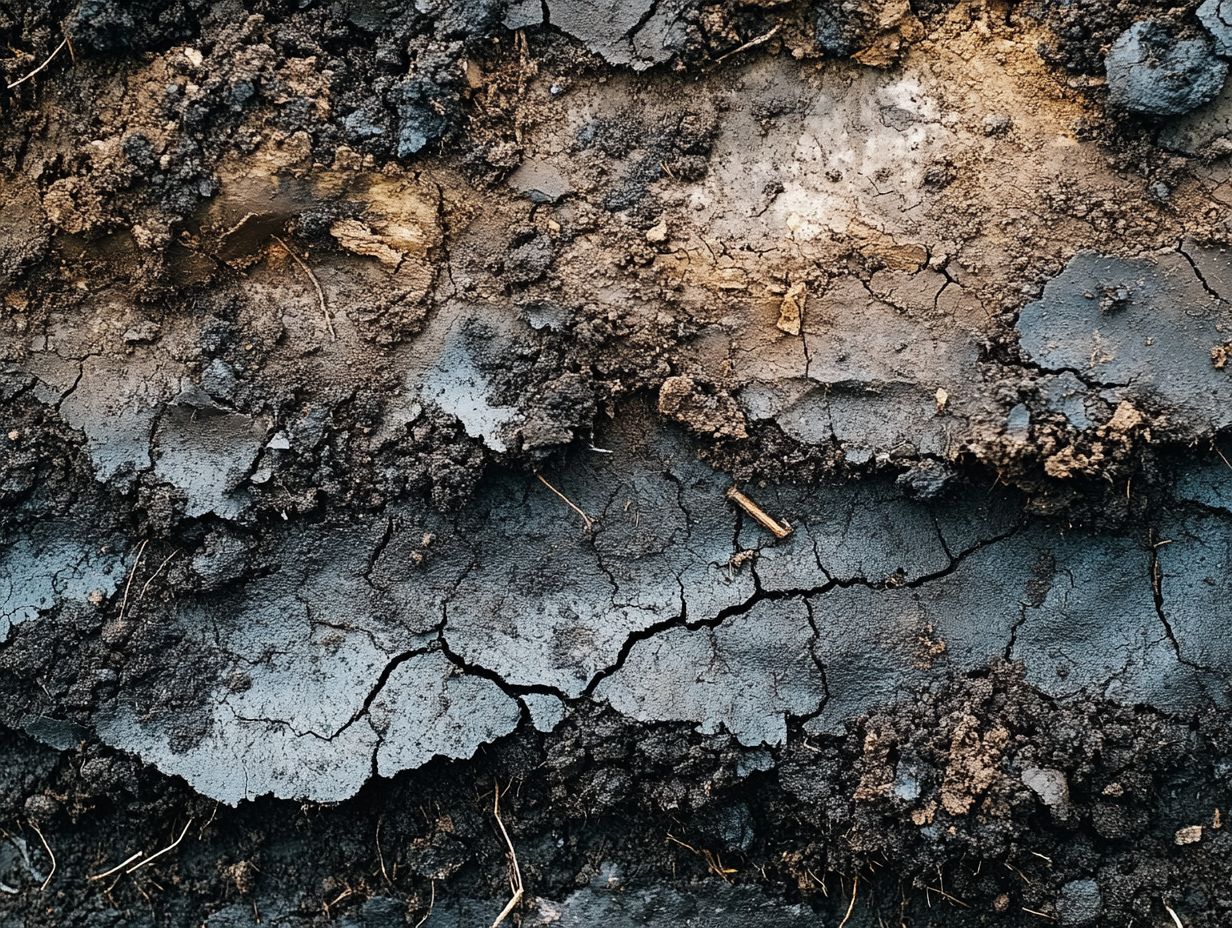
What are signs of soil bacteria imbalance?
Signs of soil bacteria imbalance include slow plant growth, yellowing or wilting of leaves, and an increase in pest and disease problems.
How can I tell if my soil has a bacterial imbalance?
A simple soil test can determine the levels of bacteria in your soil. You can also look for signs like a lack of organic matter or a strong odor coming from the soil.
What causes soil bacteria imbalance?
Soil bacteria imbalance can arise from various factors, including excessive use of chemical fertilizers, over-tilling, and lack of diversity in plant species. Pollution and extreme weather conditions are also external contributors to this issue.
Can soil bacteria imbalance be corrected?
Yes, you can correct soil bacteria imbalance through methods like adding organic matter, reducing chemical fertilizers, and practicing crop rotation to increase biodiversity in the soil.
What are the benefits of balanced soil bacteria?
Balanced soil bacteria improve plant growth and health, increase nutrient availability, and create a sustainable and resilient ecosystem. This balance also helps prevent pests and diseases from taking over.
What are some ways to maintain balanced soil bacteria?
To maintain balanced soil bacteria, practice sustainable gardening techniques such as adding organic matter, using natural fertilizers, and avoiding over-tilling. Regular soil testing and crop rotation also help sustain a healthy balance of bacteria in the soil.

